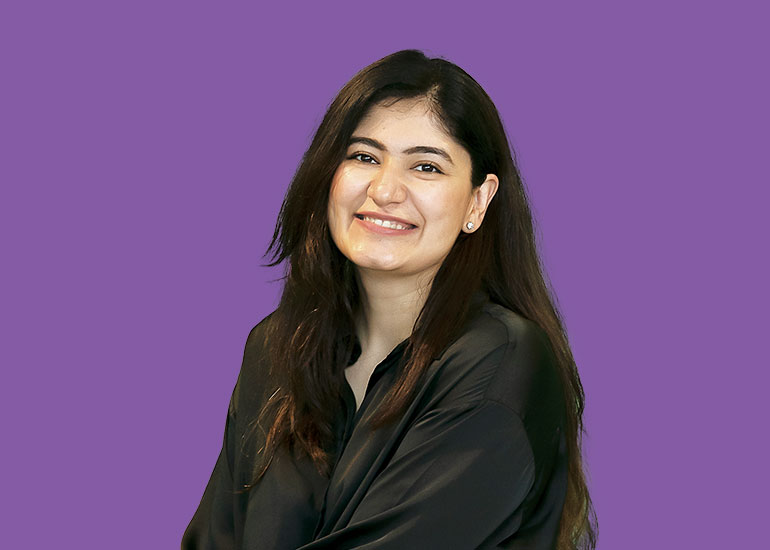Q] What was the insight behind Traya’s ‘Hope for Hair’ campaign?
This campaign is the result of a strong consumer insight – people have actually started believing that hair loss is irreversible. The belief stems from consistent failures with solutions that they have tried – from home remedies to shampoos and serums, and even clinical treatment. People nowadays have started experiencing genetic hair loss as early as 27, which is not normal. This is where Traya’s doctor-backed treatment that has been effective in reversing hair loss comes in.
The first step was to address this and rekindle hope. We tested this hypothesis last year with a video featuring Sunil Grover. It was quite successful in making people understand that genetic hair loss is indeed manageable. The second phase of communication was to educate them on why all that they tried so far didn’t work, and why Traya will. Therefore, it started with a consumer insight, which was followed by a lot of experimentation and data collection over a few months, before we realised that now is the time to get an A-list celebrity and launch our first big campaign.
Q] What took you to Rajkummar Rao?
We decided on Rajkummar Rao after a lot of experimentation, learning, and to some extent, instinct. Traya is a hardworking and honest brand. Neither do we make dramatic and unrealistic claims, nor do we capitalise on people’s fears and weaknesses. Therefore, we wanted a celebrity who exudes similar qualities. Among the options that we had, Rao’s persona, both professional and personal, resonated the most with our brand. He is not only a fine actor, but also a genuine person, which makes him very relatable.
Q] Tell us more about the execution. How were the script and visual elements put together to convey the message most effectively?
Hair loss is a sensitive issue for young people. Aside from lowering their confidence, it can also lead to serious conditions such as depression, and suicidal thoughts in extreme cases. We wanted the communication to be positive, empathetic, and hopeful, not derogatory or fear-instilling in any way. That was our first concern.
We have also focussed on the appearance of the main character. Our core TG is a 27-yr-old man – 27 being the average age of a Traya customer. This is someone who is attending interviews, hanging out with friends, and also thinking about marriage and career at the same time. That is why we rooted the campaign around marriage. We picked a confident looking actor because we didn’t want to make hair fall seem like an unmanageable or hopeless condition. The wig was carefully designed to convey our proposition most genuinely. When people come to Traya’s website to take the hair test, we clearly tell them if we can help them or not, depending on the stage they are at. That’s how we have been able to maintain our 93% success rate, and didn’t show someone with advanced stage hair fall in the ad. All of these things were kept in mind while casting, scripting, and designing.

Q] What mediums are you using to promote the campaign?
The idea was to have a 90:10 ratio for online and TV/OTT. While initially we did some TV, currently the campaign is online-only. This month we launched outdoor as well. It’s a city-level exercise. This is not a one-time campaign that we will run for a limited period of time, it is something that we are building upon. In fact, we have shot three films, of which only one has been launched so far.
Q] Have you identified any key markets or is it a pan-India campaign?
We are targeting north and central India. We have used a Lucknowi, or Kanpur kind of setting, with the ‘Shuklas, Sharmas and Dubeyjis’. According to our research, Traya is doing really well in these regions, and that is a result of the brand’s control over Hindi, English, and ‘Hinglish’. So, we wanted to double down on that. However, Traya’s penetration in the southern markets is quite low, and hence we are currently running campaigns with celebrities that are somewhere between A-listers and influencers. We recently did one with a Telugu actor, and the response has been good in Karnataka and Andhra Pradesh. As a consequence of such initiatives, we are seeing our customer base growing in these geographies.
Q] What outcomes are you expecting from this campaign?
Our primary objective is to build brand reach, but we also want to drive conversions for the brand. By conversion I mean that people should not just know about the existence of brand Traya, but also know that it works. We are aiming for something between brand reach and people coming to our website to take the test, i.e. the brand recall that ‘Traya works for hair loss.’
Q] How has Traya grown since its launch in 2019? What’s your next goal?
We started the company in 2019, and the following year went into developing the formula, clinical trials, manufacturing, etc. So, the brand and the website were officially launched in November 2020. Last year was really exciting for us as our top line grew 13x, making us one of the fastest growing brands in the D2C space. Most of this growth comes from the male hair loss space, and in January this year, we launched solutions for women. It is still very small. So, 2023 is going to be all about scaling up. Right now, we have 80-20 ratio for male vs. female, and our aim is to make it 50-50 by the end of this year.























